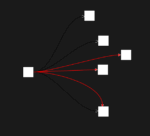Imagine building a high-performance race car, only to discover halfway through the race that critical parts were incorrectly installed. Data engineering, like race car engineering, demands careful attention and strategy. Unintentionally implemented anti-patterns can restrict your business speed, scalability, accuracy and innovation. Understanding and avoiding these common pitfalls positions your business to lead industry standards, drive smarter decisions, and ensures your data isn’t a bottleneck—but a powerful strategic asset. Let’s unpack five prevalent anti-patterns that could damage the potential of your organization’s data-driven initiatives and explore how to steer clear of these costly errors.
1. Ignoring Data Silos: The Hidden Danger of Fragmented Information
Many organizations fall into the trap of allowing data silos to proliferate unchecked. Teams, departments, and applications accumulating isolated data sets can severely limit your company’s insight potential, leading to inefficient decision-making, duplicate efforts, and tremendous loss of value. Data silos isolate vital data integration points and curtail strategic synergy—effectively making your organization slower, disconnected, and vulnerable to miscommunication.
Breaking down these barriers requires an intentional, systematic strategy toward data integration and unification. Successful data-driven businesses leverage technologies like cloud-based data warehouses, federated query systems, and clear data governance policies to synchronize information across stakeholder groups. If data silos have taken root in your organization, you may benefit from exploring a comprehensive guide on how to spot data silos that may be holding your business back. Mirror today’s most successful organizations—integrate data sets strategically across departments to unlock your organization’s true analytical potency.
2. Overlooking the Importance of Accurate Data Representation
It’s tempting to build dazzling dashboards that captivate stakeholders. However, neglecting accuracy in data representation undermines trust and sabotages analytics credibility. Data engineering isn’t about obscure artistry—it’s about clearly, responsibly communicating key insights to support decision-making processes. Visualizations must reflect underlying data realities precisely, ensuring conclusions drawn are valid and correctly interpreted.
Inaccurate axes, distorted scales, or misleading visual cues deliver faulty insights, skewing decision-makers’ perceptions and causing potentially disastrous outcomes. Smart visualization practices use appropriate scales and axes to accurately represent data, ensuring information isn’t diluted, overemphasized or misrepresented in any manner. Investing time upfront in accurate dashboard design delivers long-term business value. When graphics and visuals accurately illustrate data insights, stakeholders gain actionable clarity, accelerate decision-making, and enhance their understanding—ultimately creating stronger business intelligence cultures and informed, innovative operations.
3. Neglecting Real-Time Data Streaming: Damaging Decision-Making Velocity
While batch processing data remains fundamental to many pipelines, modern digital organizations cannot afford exclusively batch-driven workflows. Businesses must act quickly, responding instantly to rapidly-evolving threats and opportunities. The neglect of real-time data streaming capabilities introduces harmful latency, hampers proactive decision-making, and reduces an organization’s agility.
From detecting anomalous transactions early, mitigating fraudulent activities swiftly, or delivering personalized customer experiences immediately, engaging in strategic implementation of real-time streaming ensures enterprise advantage. Explore more about the role of data streaming in fraud prevention—because the value of real-time analytics extends beyond tactical advantage. It creates expanded operational transparency, strategic foresight, and reliable infrastructure geared for long-term growth. When your organization deliberately incorporates real-time streaming capacities into data engineering, you position yourself on the cutting edge of technology, ready to harness immediate opportunities.
4. Improper Application of Aggregate Functions and Analytics Techniques
Powerful analytic methodologies, such as aggregate functions in SQL—like MIN, MAX, AVG, SUM, COUNT—can provide unmatched insights when skillfully employed. Yet, improper or unoptimized usage often results in poor query performance, inefficiencies, and incorrect conclusions. Data engineers who ignore best practices regarding aggregate functions inadvertently produce inefficient systems, slowing down analysis, skyrocketing costs, and frustrating end-users.
Aggregate functions demand strategic implementation and performance optimization. Proper indexing, query refinement, and timely analysis all contribute meaningfully to analytic engine efficiency. Businesses require skilled data engineers and analysts capable of harnessing aggregate functions in SQL to unlock their full potential. Training teams on these crucial best practices ensures your business achieves accurate, actionable intelligence immediately, supports high-performing data solutions, maximizes compute capabilities, and builds future-proof, scalable infrastructure—all vital facets of competitive organizational strategy.
5. Misplaced Trust in AI and Automation without Proper Oversight
Artificial intelligence and automated systems have undeniably revolutionized data engineering processes and capabilities. However, adopting them without adequate oversight can quickly spawn unforeseen consequences. Companies that place blind trust in AI’s outcomes without rigorous vetting and continuous assessment risk making critical strategic decisions based on faulty models, data biases or flawed algorithmic logic.
AI models require careful, human-guided continuous evaluation. Your data engineering strategy should include comprehensive methods for model validation, transparent processes, and thorough understanding of AI-driven decisions. Deploying AI responsibly not only demands human oversight—it thrives upon it. To ensure optimal AI integration, consider the importance of trusting AI vetting and discovering the right software engineers. Strengthening your team’s expertise means you’re integrating AI within validated ethical and practical boundary lines. By properly overseeing your AI and automation activities, you enhance transparency, accuracy, reliability, and ultimately, foster an environment for informed innovation and responsible use of advanced technology.
Drive Strategic Insights, Avoid Costly Pitfalls
Successfully avoiding these common data engineering anti-patterns helps your organization harness technology’s full potential. Proactive identification, thoughtful governance, robust real-time data-streaming infrastructure, optimized aggregate function usage, precise visualization strategies, and responsible AI integration become powerful competitive advantages. Ensuring these anti-patterns don’t infiltrate your workflows significantly amplifies your organization’s analytics, enhances competitiveness, nurtures innovation, and positions your data engineering capabilities above the competition.
Aligning your business with optimal data practices establishes the vital backbone for navigating today’s rapidly evolving technology landscape. If you’re ready to build transformational data engineering solutions and take your business further, exploring specialized, professional support—like Dev3lop’s advanced tableau consulting services—can streamline your analytics path, maintain competitive differentiation, and position you firmly as a data-driven powerhouse.

























